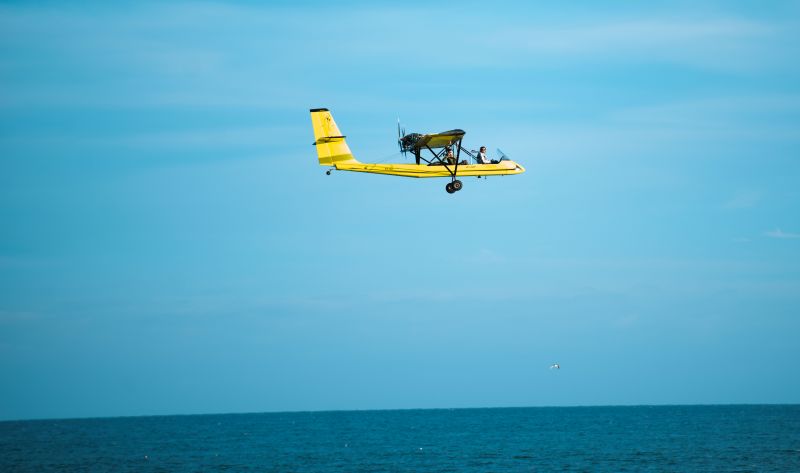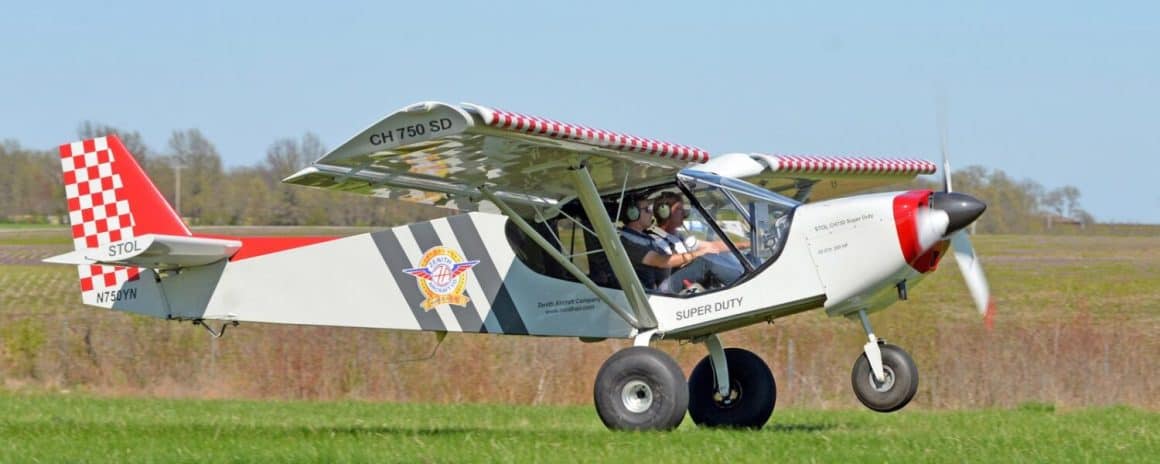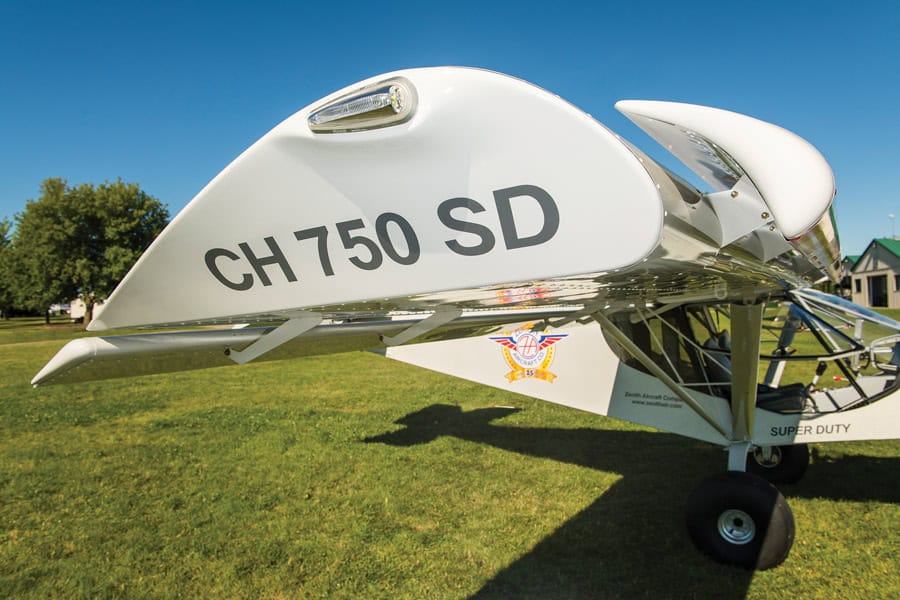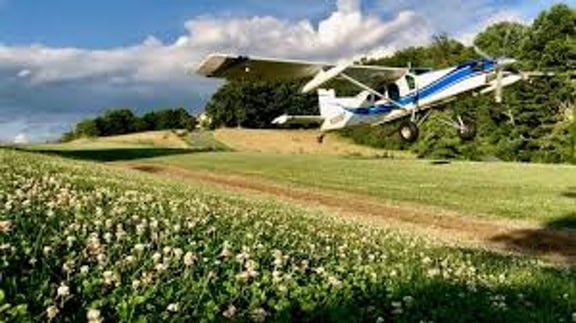When Jason Wilkinson was in an entrepreneurism class at the Southeastern Baptist Theological Seminary in Wake Forest, North Carolina, he got an idea to combine missionary work with light sport aircraft. He and his wife Liani turned this interest into ‘Great Commission Aviation,’ with the goal to “help reach the unreachable parts of the earth with the Gospel by training missionaries to be their own pilots and utilizing light sport, experimental (kit built) and non-traditional aircraft for their ministry use.”
A new idea for light-sport aircraft
Since Wilkinson started Great Commission, a 501(c)(3) Nonprofit, in 2014, the organization’s focus has shifted to more of a consulting function for him, although his determination to help missionaries “reach the unreachable” has not changed. Prior to that, he was an accountant and then attended the Southeastern Baptist Theological Seminary from 2012-2014.
When Wilkinson first considered combining aviation with missionary work, he looked at the more traditional methods of becoming a missionary pilot. He learned that requirements for this are steep, often with pilots needing at least 500 hours in the cockpit, an Airframe & Powerplant (A&P) License, and to be debt free in order to be hired by one of the larger organizations doing this kind of work.
Larger organizations with large fleets
Two of the organizations doing this good work are Jungle Aviation and Radio Service (JAARS) and Mission Aviation Fellowship (MAF). They operate fleets of twelve and five aircraft, respectively, including one helicopter. These are all larger than the light sport aircraft Wilkinson works with at Great Commission.
JAARS has five piston-driven Short Takeoff and Landing (STOL) airplanes including Helio Couriers and Cessnas, a single-turbine STOL Pilatus PC-6 Porter, and a Robinson R66 helicopter. MAF has three single-engine piston Cessnas and two turboprop planes – a Cessna Caravan 208 and a Kodiak 100.

Light-sport aircraft can meet an important need
Wilkinson began looking for a different way to help missionaries reach people.
He often mentions how there are seven billion people in the world, adding that there will always be a need to help others. He saw that missionaries often need reach communities in remote locations lacking the runways and other facilities larger aircraft require. Light-sport aircraft provided an effective solution as they were cheaper and could be assembled from kits.
Wilkinson found that missionaries often need to travel only about 50 miles to reach the communities they support, but that poor roads or dangerous water conditions could make this a difficult and slow drive or trip by boat. It might take eight hours to drive 30 miles over rough, unpaved roads. A light-sport aircraft moving at about 130 mph could fly that distance in less than an hour.
Challenges and solutions possible with light-sport aircraft
The basic plan for Great Commission Aviation was to train and support missionaries in assembling and flying light sport aircraft. There are different licensing requirements for pilots of light-sport aircraft around the world. Wilkinson and some of the pilots he has worked with have identified some unique ways to gain approval for missionary flights.
For example, one missionary was seeking permission to fly his light sport aircraft to several islands in the southern Philippines. Officials denied his initial request, but then he offered to fly several missions each month to support local coast guard search and rescue operations. The official then granted him permission to make his regular flights to the missions he was helping.
Lockwood Providing powerful light-sport aircraft
Two of the companies producing the light sport aircraft missionaries use are Lockwood Aircraft Corporation and Zenith Aircraft Company. Lockwood makes the Air Cam, a twin-engine, plane. It carries two passengers and useful load of 8000 pounds. The maximum speed of the Air Cam is 110 mph, and it can cruise at 50 to 85 mph.

Carrying 28 gallons of fuel, it can fly 340 miles at 70 mph, more than far enough to fly the distances Wilkinson mentioned. He added that that many of these light-sport aircraft use regular automotive gasoline. The Air Cam also has short takeoff and landing (STOL) capabilities. It can take off in less than 100 feet and land in under 500 feet. The Air Cam, with its Rotax engines, can fly at altitudes as high as about 14000 feet, but Wilkinson says that with its twin engines it can safely fly at just 500 feet.

Lockwood sells Air Cam kits in sections for the fuselage; tail section and control surfaces; center section, fuel tanks, and wings; a finishing kit; engine packages; and avionics. Altogether, the cost to build an Air Cam is about $250,000, although that varies. For example, Lockwood offers an amphibious rigging package with floats and other equipment for taking off and landing from water.
Zenith aircraft have impressive STOL abilities
Zenith Aircraft Company sells kits for some less expensive, but still popular and capable light sport aircraft. Their single-engine STOL 750 Super Duty can operate from “short strips, sandbars, and mountain meadows,” very useful for the types of flying some missionaries do. It can get in the air with just a 115-foot takeoff roll and land in 150 feet. The cost to build a 750 Super Duty can be a bit less than $100,000.

Zenith designs their aircraft so that anyone with basic mechanical skills can assemble one. Features like predrilled holes make the work easier, minimizing marking, measuring, and drilling. Zenith estimates it should take the average builder around 250-300 hours to assemble one. Wilkinson added that he recommends missionaries assemble their aircraft in the United States, and then take them apart for shipping overseas. That way the final building process will be even easier.

A strong desire to help and support
With Great Commission Aviation, Wilkinson, also flies the Phenom 300 commercially for Flex-jet. He now focuses on answering questions and providing recommendations and support for missionaries wanting to fly light sport aircraft to their missions. They serve in locations like the Philippines, Haiti, Ecuador, New Guinea, Uganda, and more. Wilkinson also helps missionaries plan marketing and fund-raising efforts for their aircraft.
He often asks missionaries, “How can we do this, and how can we help you.” Great questions, especially consider there are “seven billion people in the world”, with many needing the support missionaries can provide.


